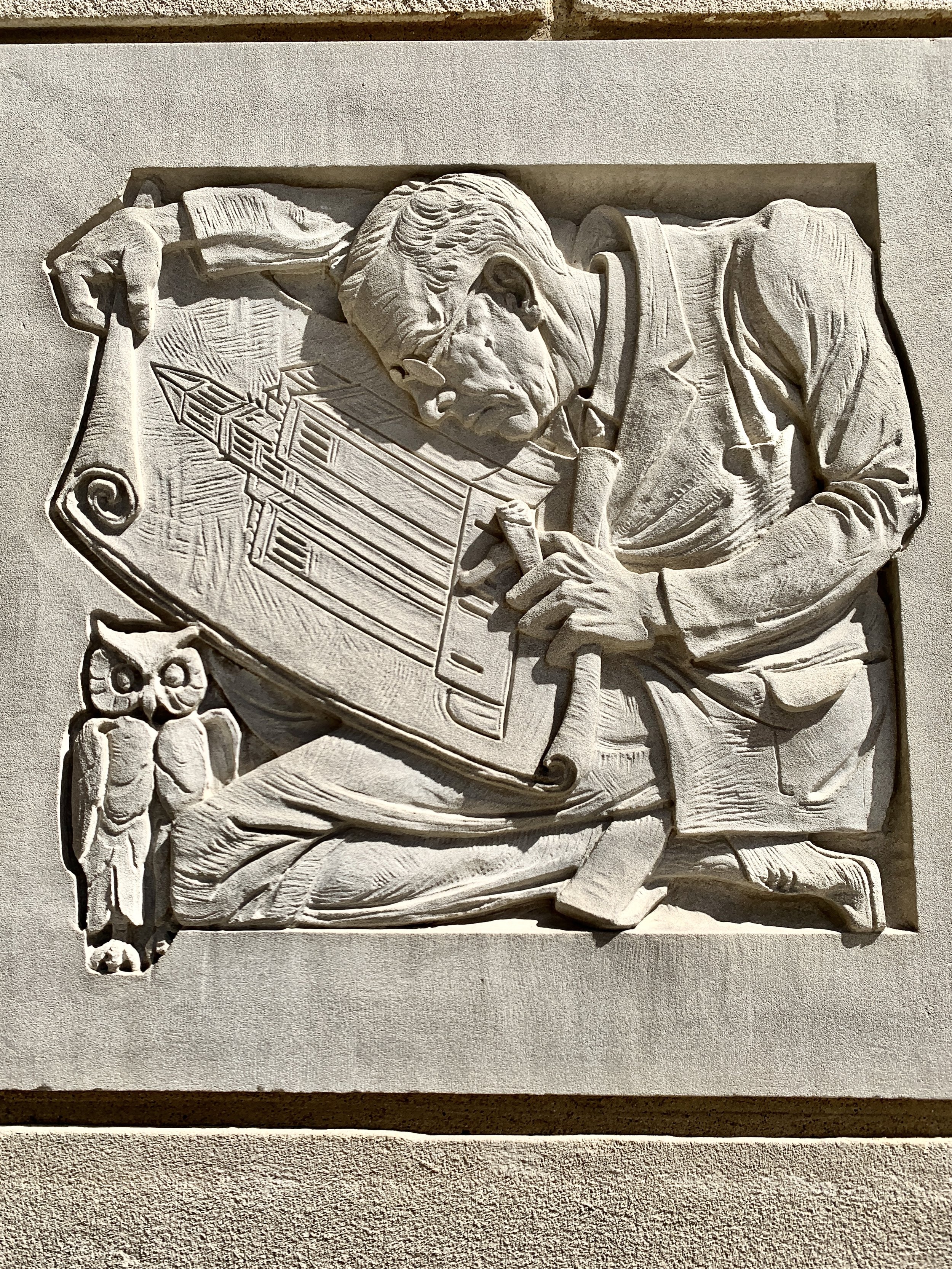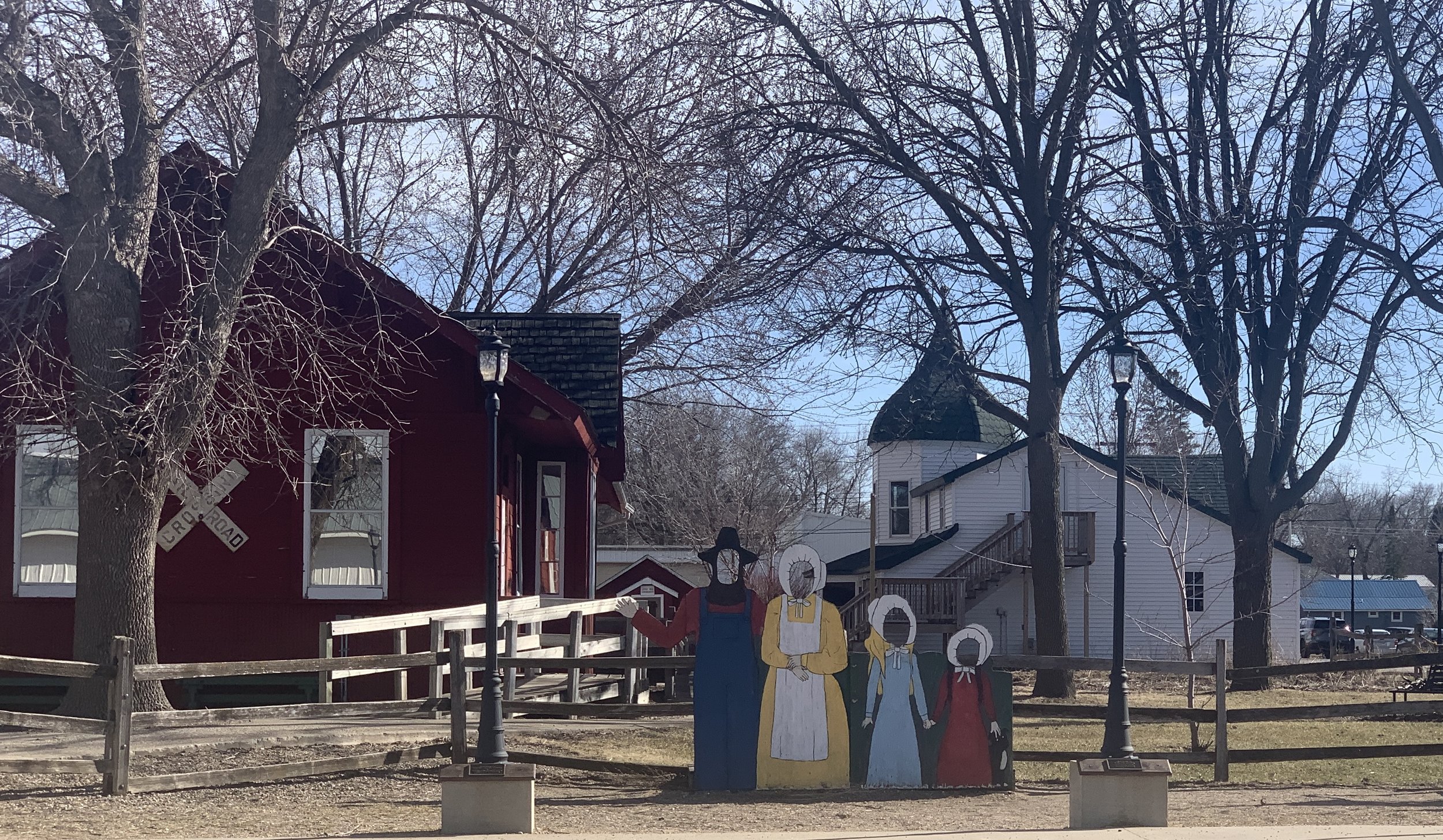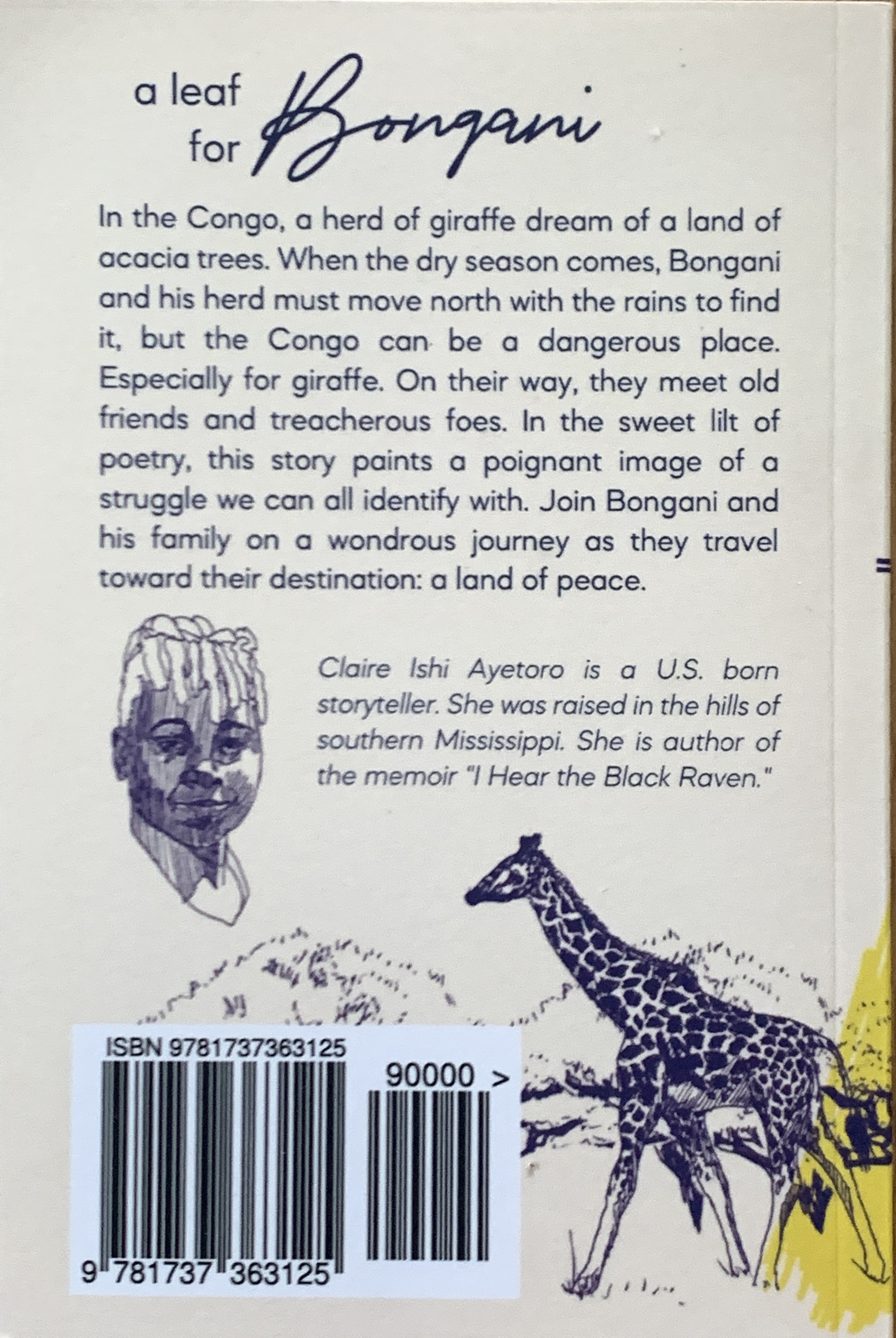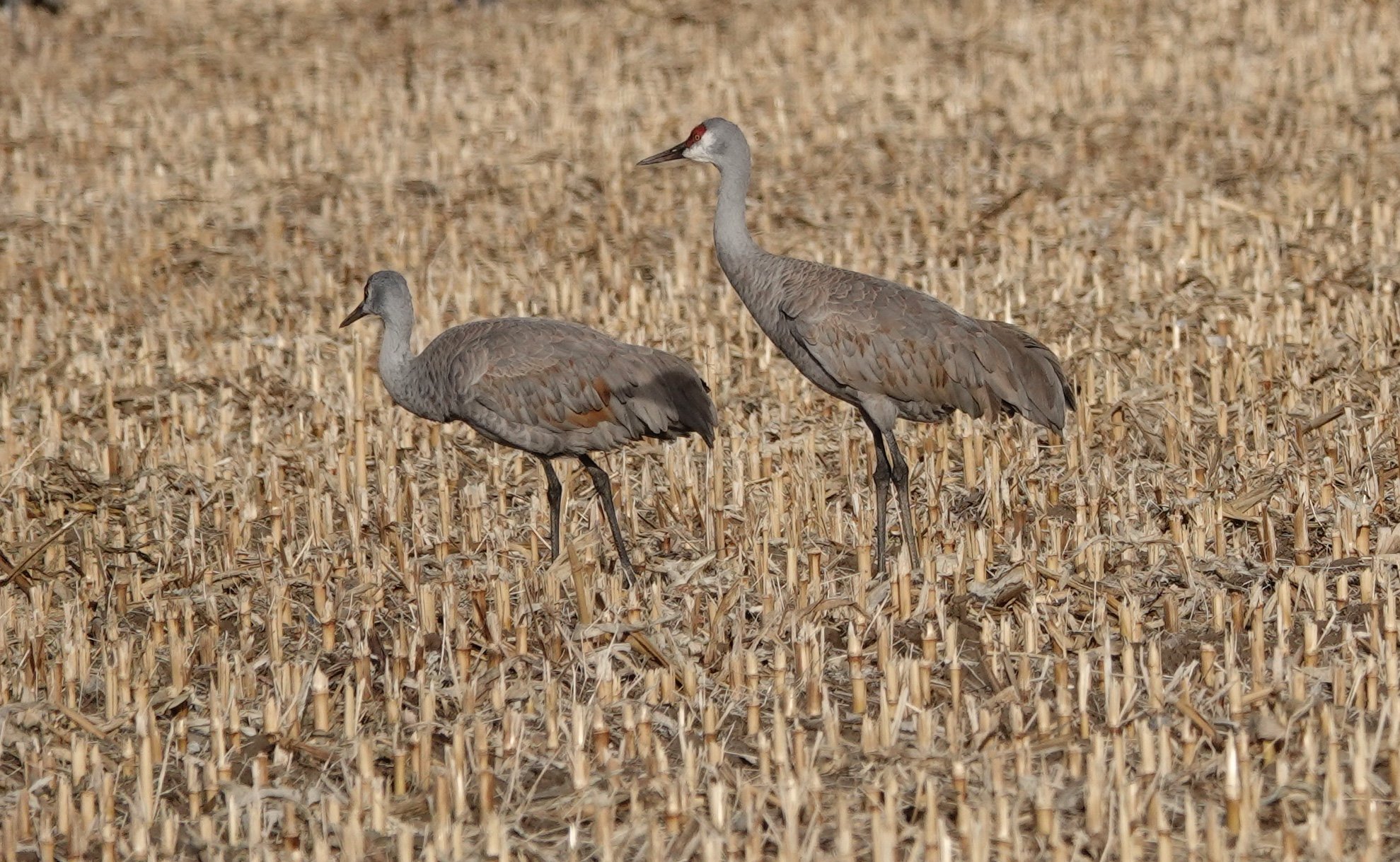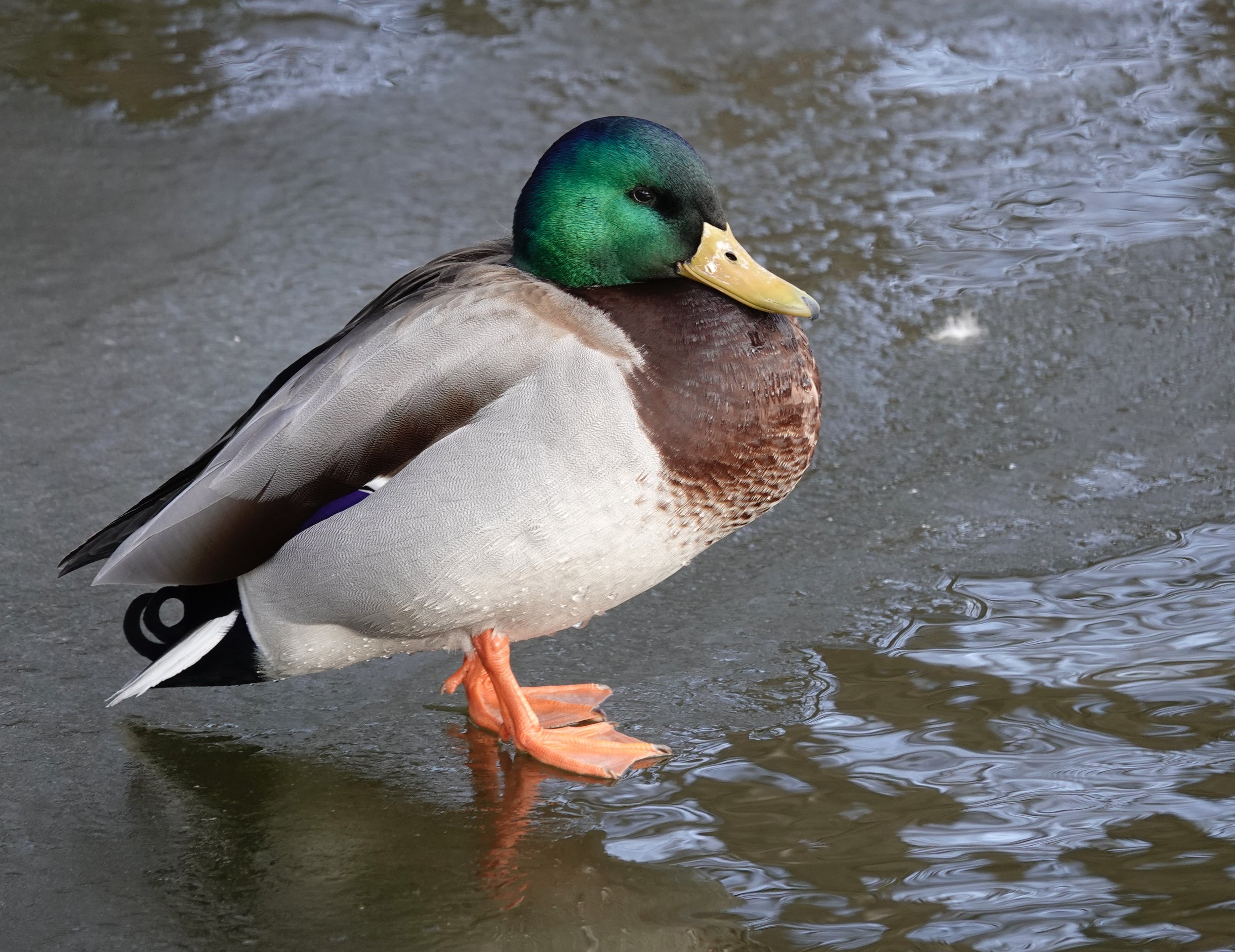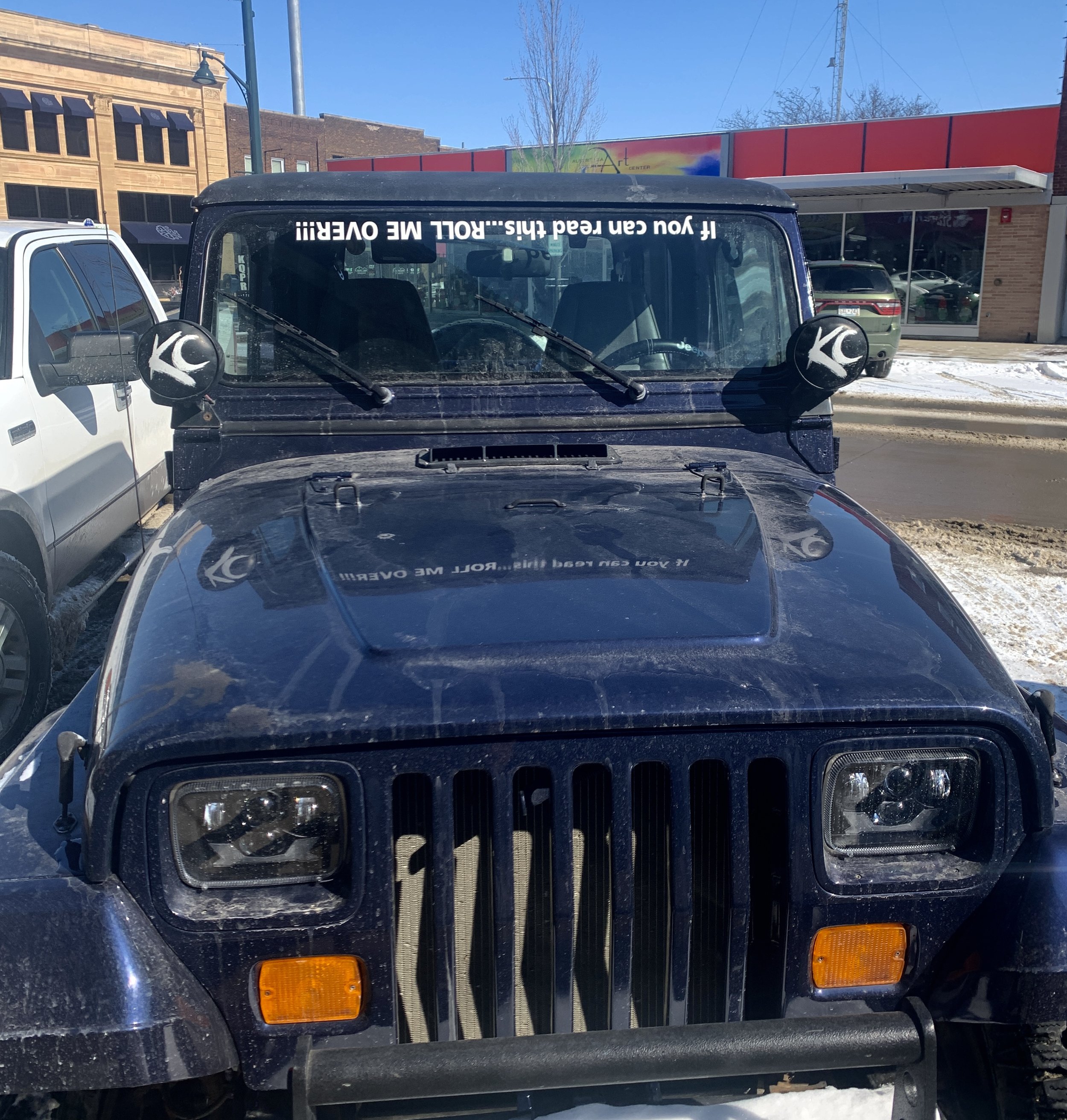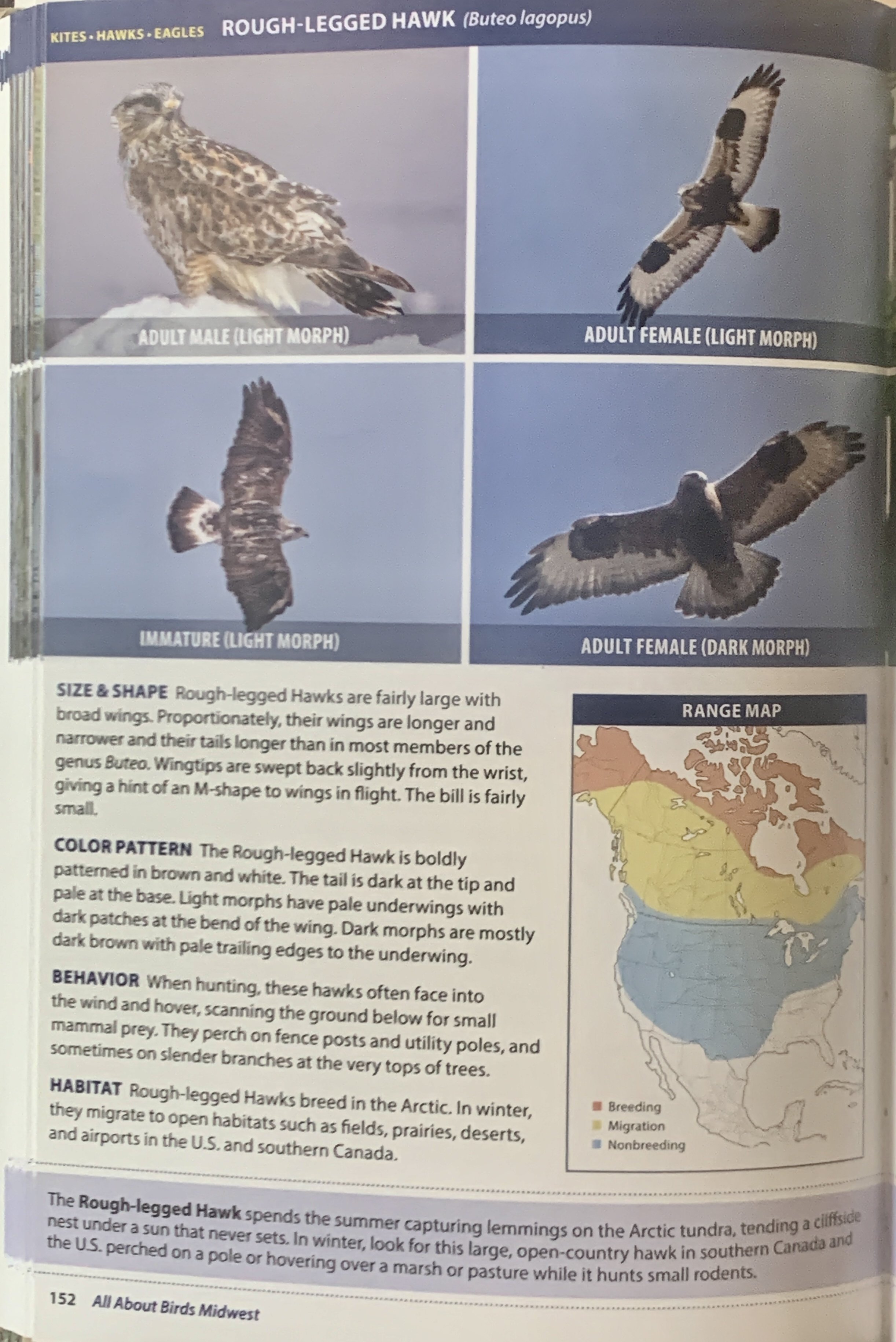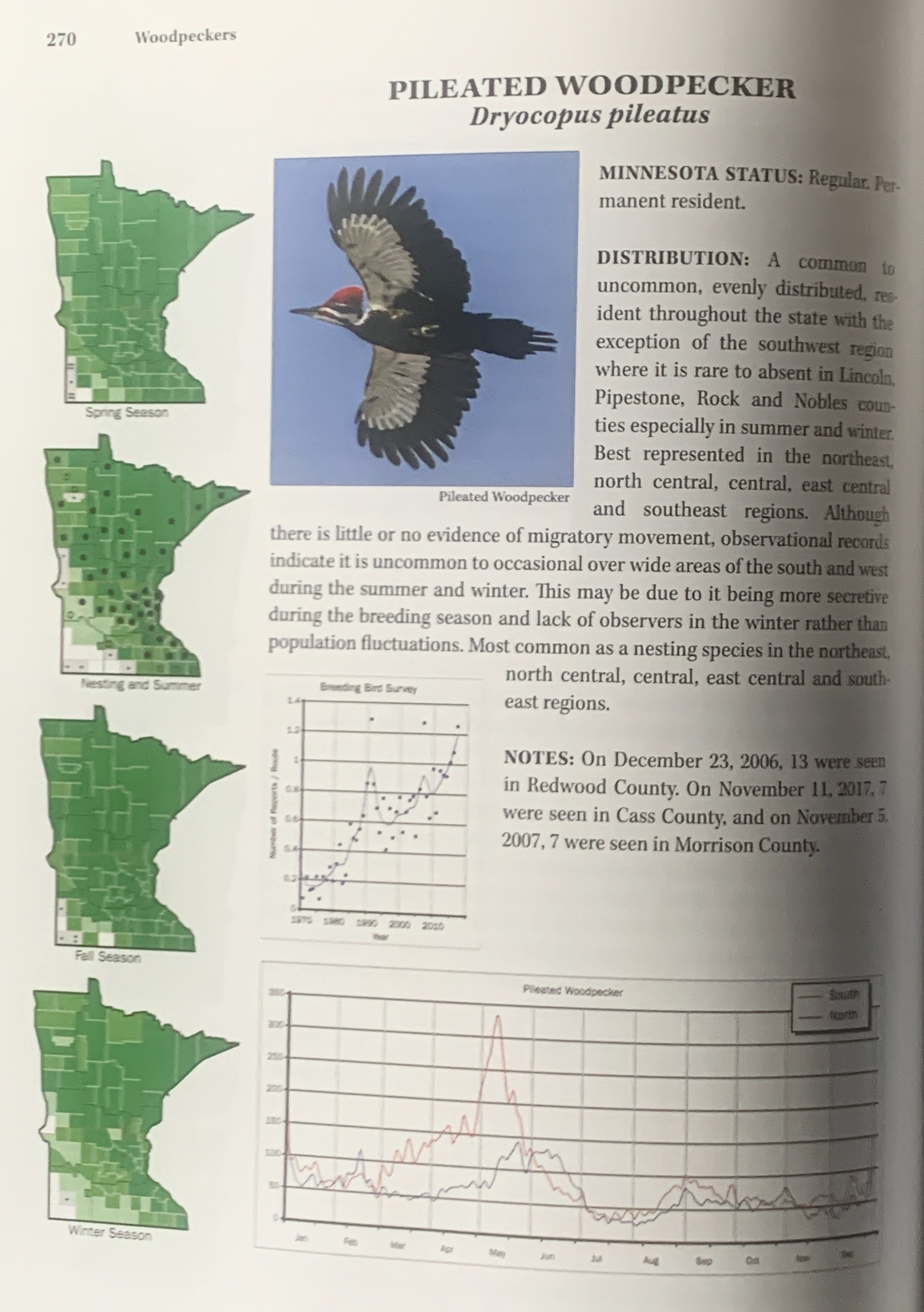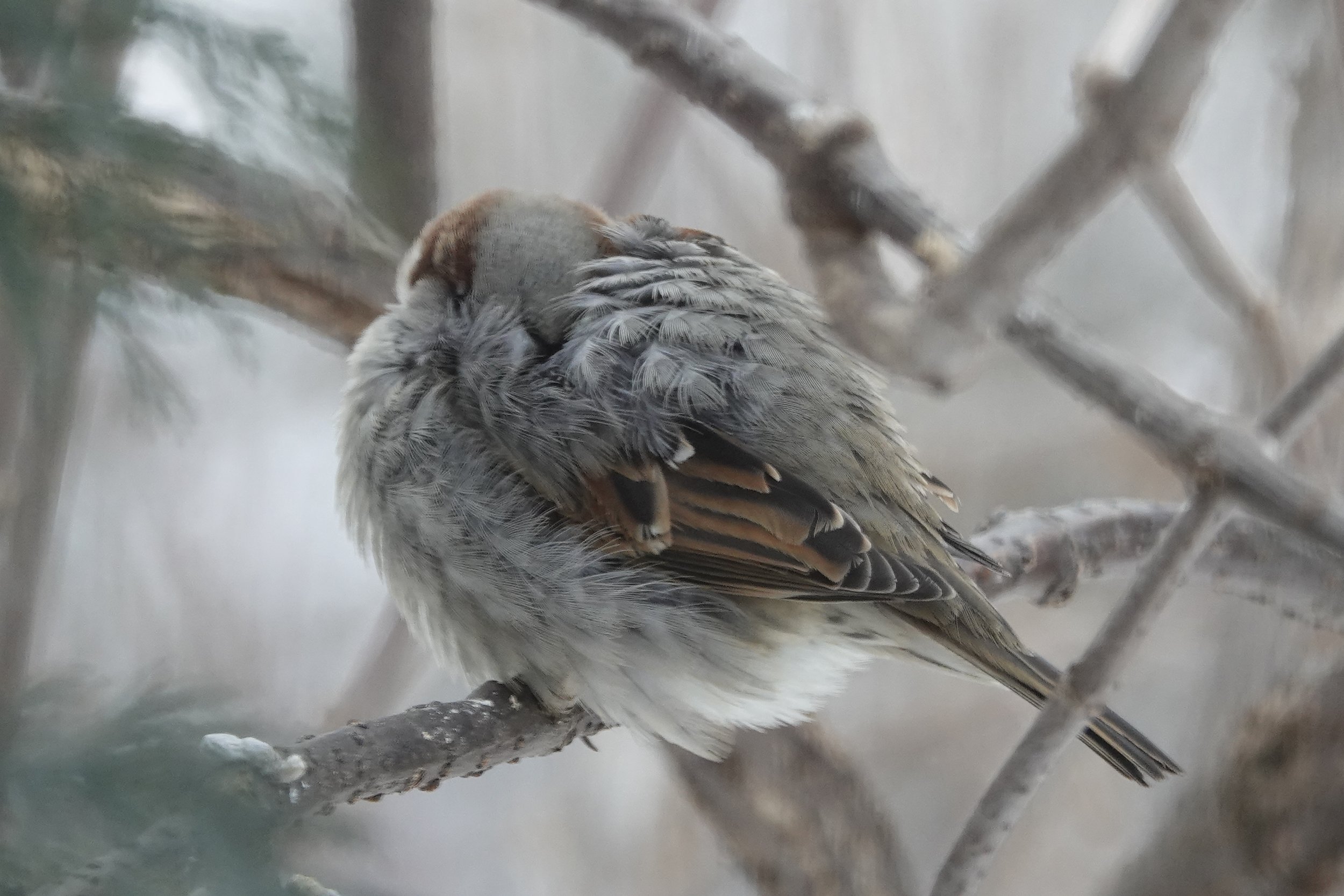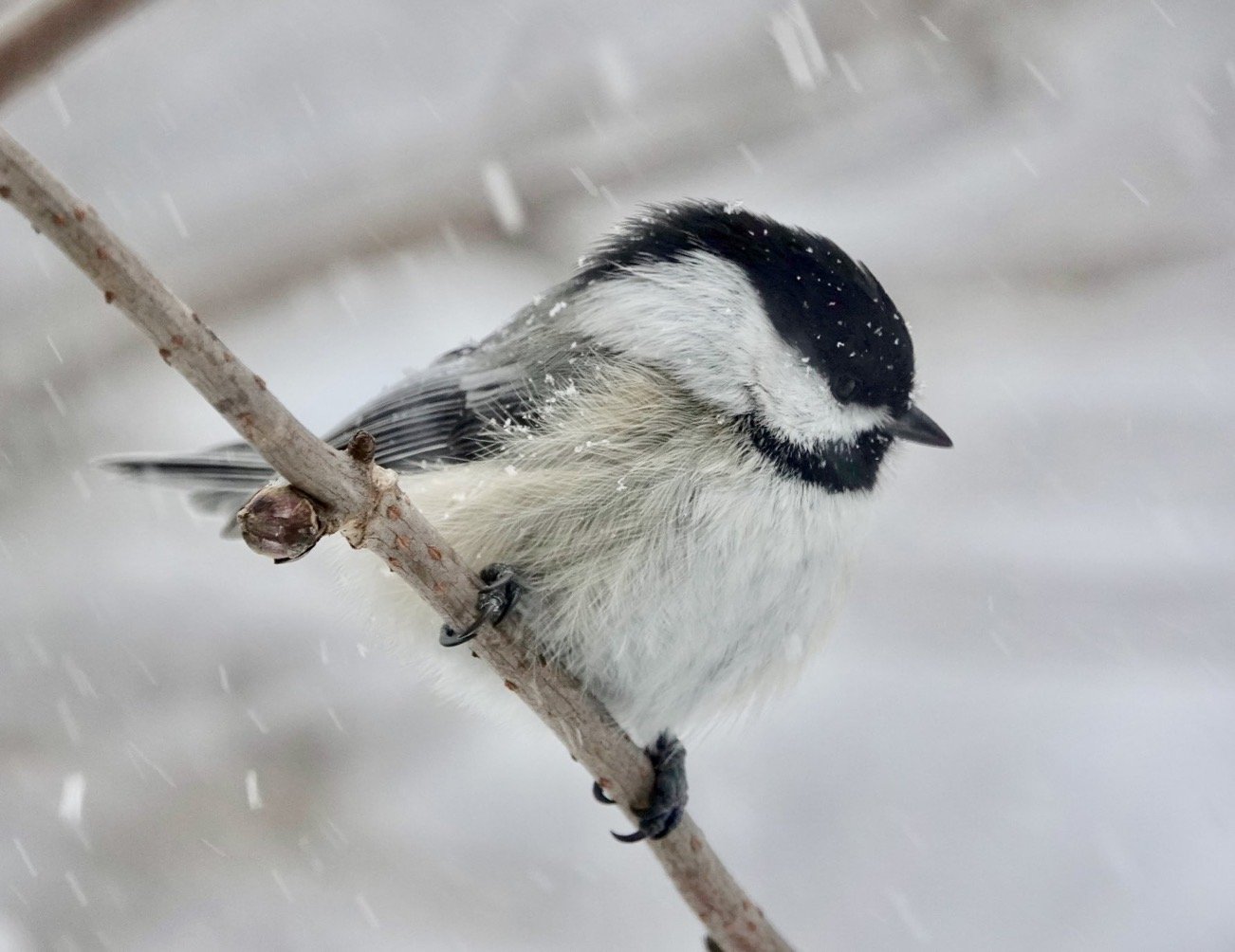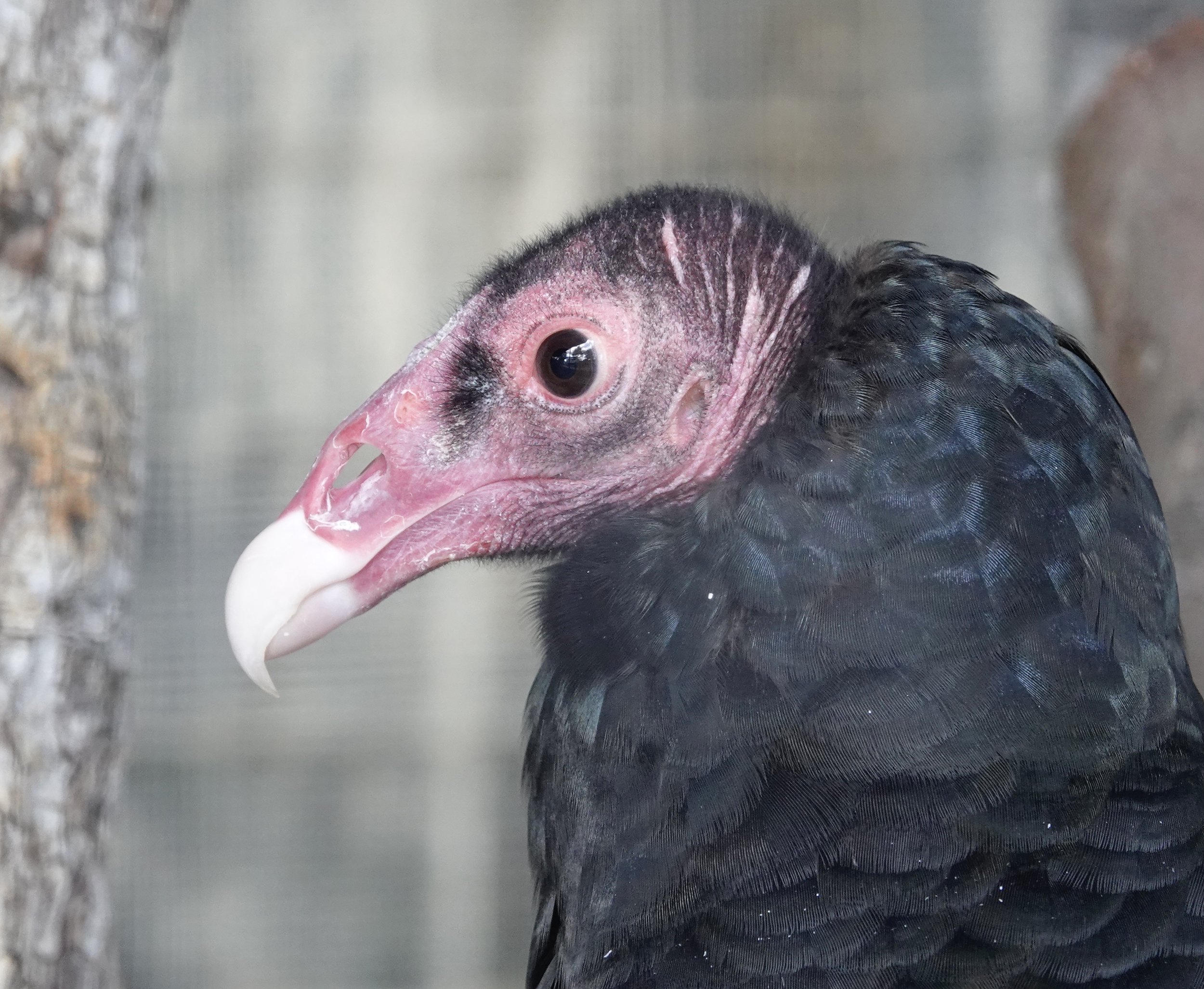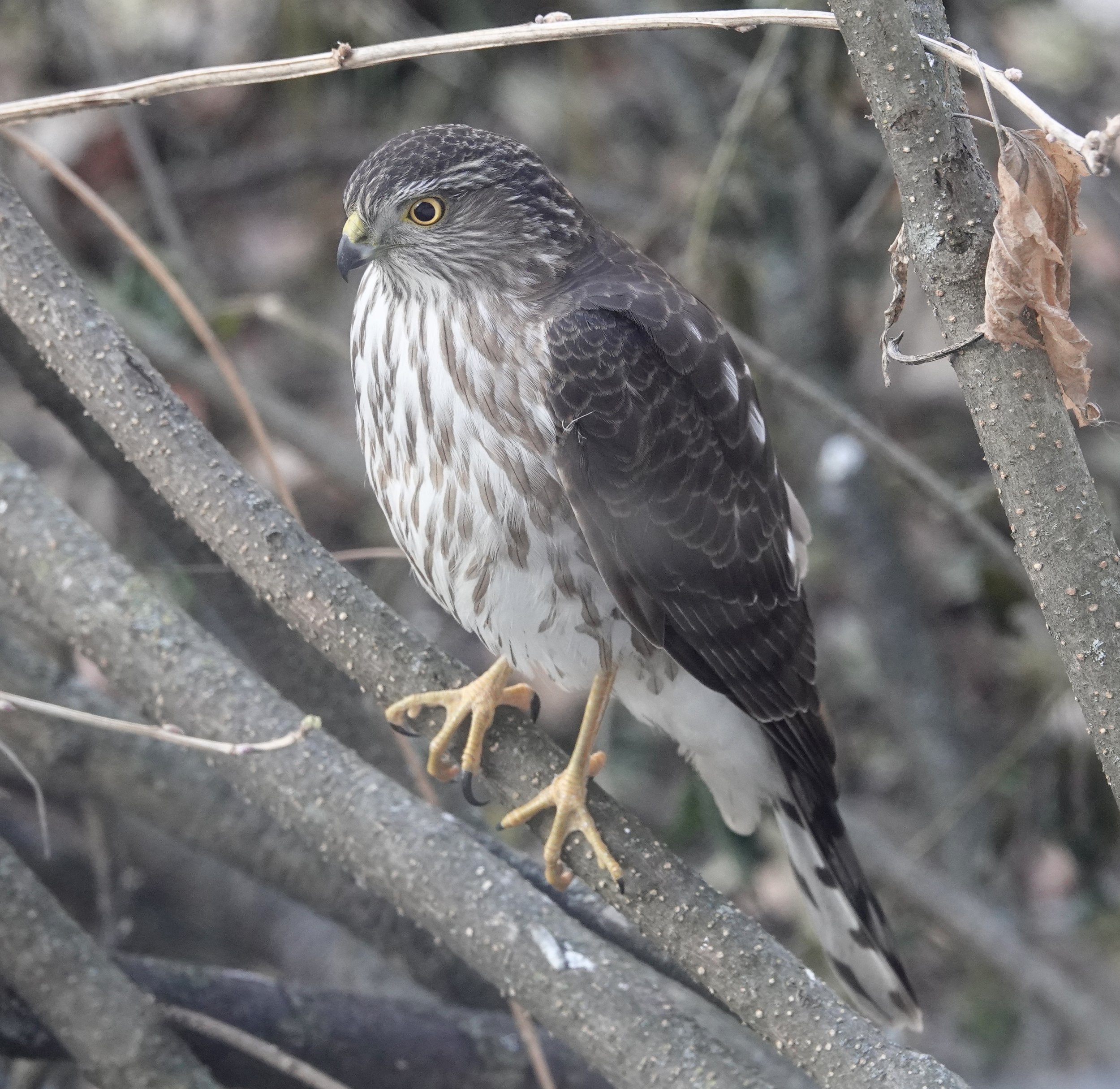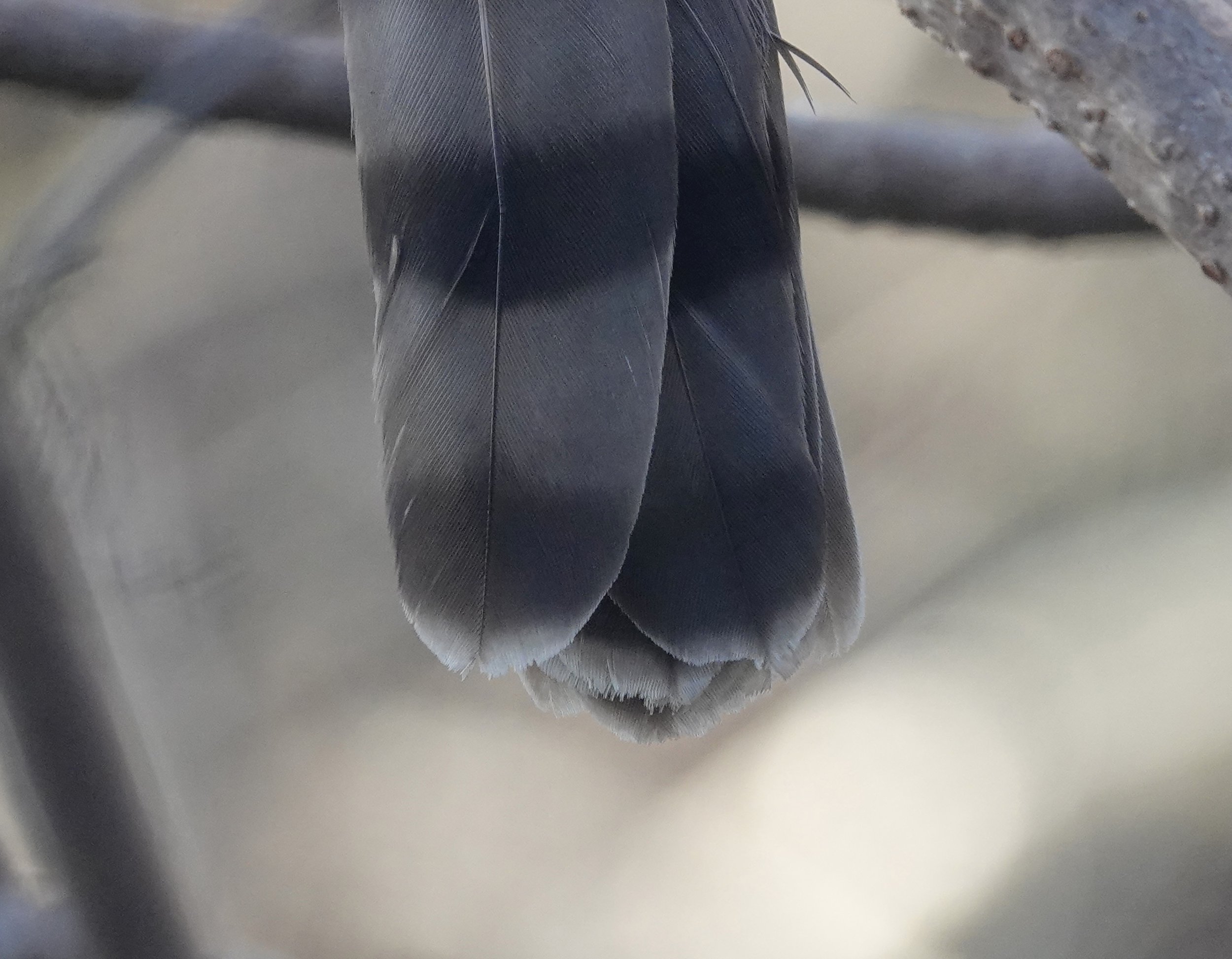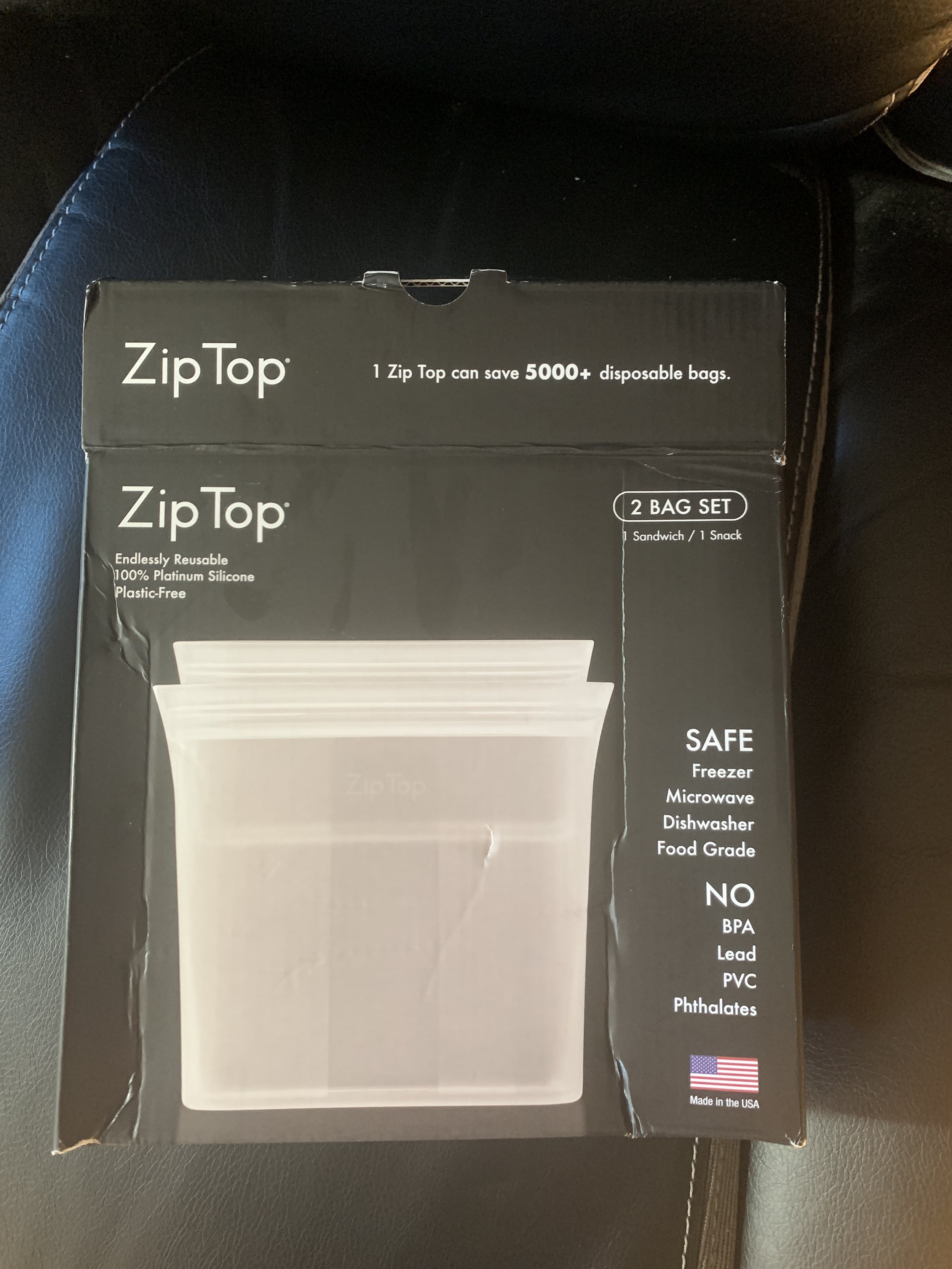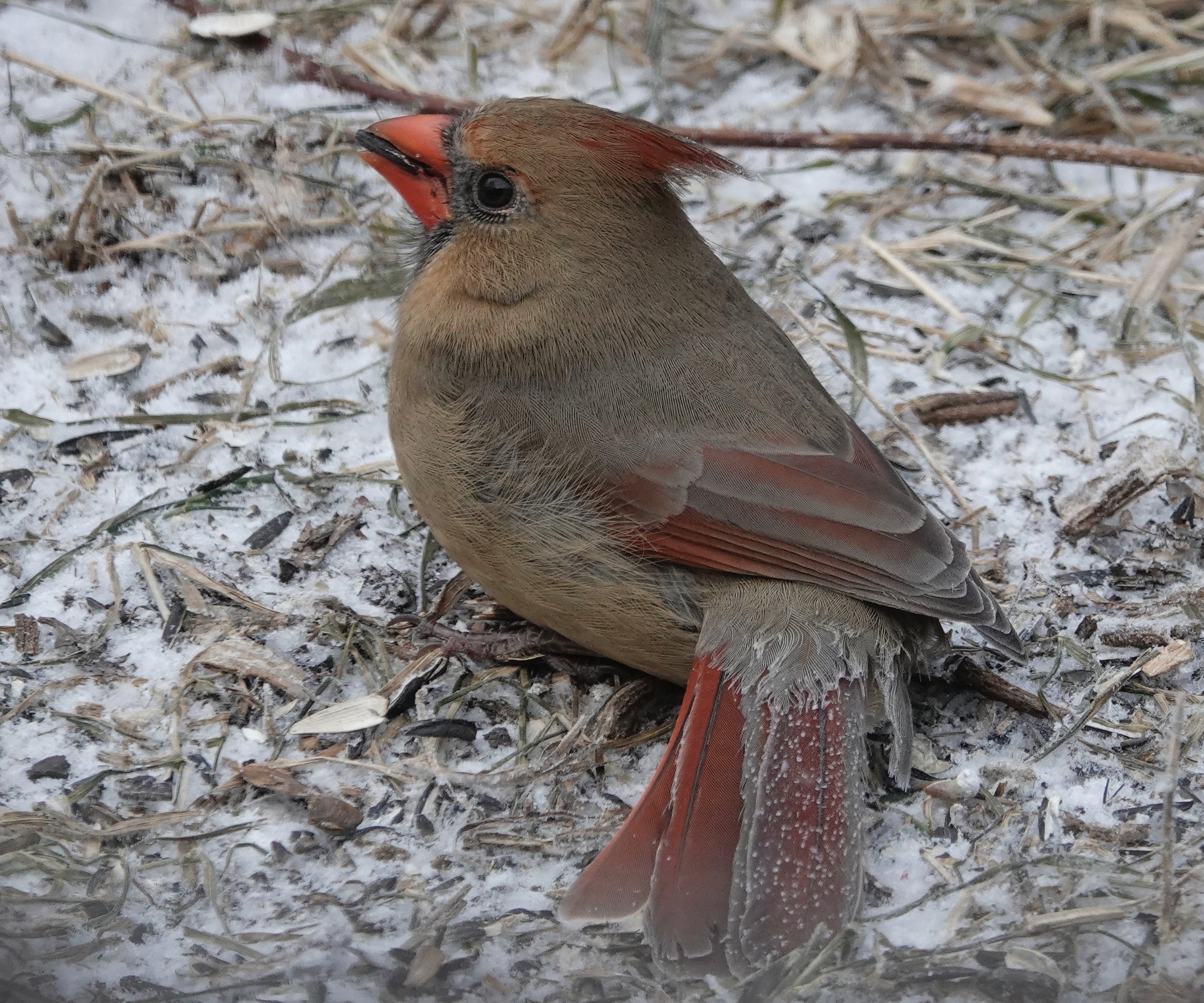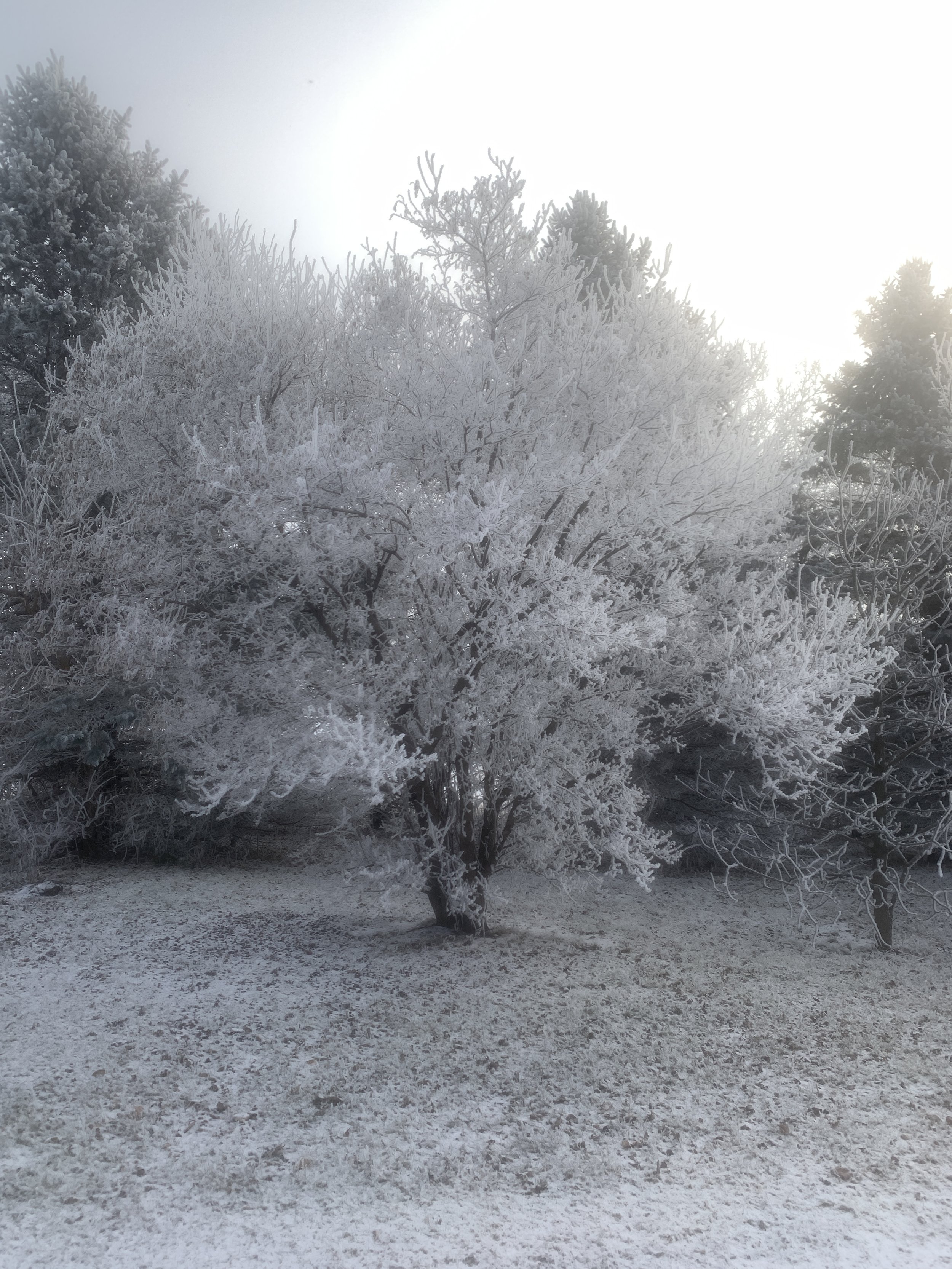A wise owl on the wall of the Plummer Building in Rochester. Photo by Al Batt
Naturally
Dandelions bloomed and the smell of skunk was in the air. That aroma is unlikely to become the next big candle scent, but it’s not the worst odor. The laughter of a gull accompanied me as I beheld the lovely Plummer Building, part of the Mayo Campus, which was opened in 1928 and is a focal point of Rochester’s skyline. It has a 56-bell carillon. When I looked at the building, it looked back. It has gargoyles, a hawk for vigilance, an owl for wisdom and a winged salamander because “Why not?”
A black-capped chickadee fought with his image in the window glass. He makes gargling sounds indicative of territorial concern as he battles my window with a view. He strikes the glass with a fierce, yet charming facility. Cardinals and robins are regulars in that boxing ring, and I’ve seen wild turkeys, great crested flycatchers, chipping sparrows, Baltimore orioles, eastern bluebirds, a rooster chicken and other species fighting with windows. The glass in my windows remains undefeated. Blue jays seem to understand the image isn’t an actual bird. Magpies have been tested and found to understand reflected images are fake birds.
I watched kissing cardinals. During courtship, males prove their worth by feeding seeds to a female one at a time, directly from his beak to hers. This courtship display looks like kissing.
Q&A
David Stoering of Courtland asked when Eurasian Collared-doves first came to Minnesota and why he doesn’t see any western meadowlarks, whose songs he enjoys. The doves were first spotted in the U.S. (Florida) in 1986 and first documented in Minnesota in 1998. Meadowlarks have been hit hard by the fragmentation of grassland habitat due to increasing urbanization and changing agricultural practices. If you take away the grass, you take away meadowlarks. The song of the meadowlark is a familiar and iconic sound heard across the grasslands of the Midwest. Science suggests that meadowlarks have been affected by neonicotinoids, a group of insecticides used on crops. The western meadowlark population in Minnesota has decreased an average of 7.51% per year from 1967 to 2015. Other factors affecting meadowlark populations may include other pesticides, habitat degradation because of invasive plant species, the declining number of farms pasturing cattle and fire suppression that alters native grasslands. Nesting on the ground leaves them vulnerable to predators: raccoons, cats, skunks, foxes, weasels, coyotes and hawks. I hear their song, but not as often as I once did. I miss hearing the melodious, flutelike voice of this lemon-breasted bird who serenades my memories. Sometimes I hear a starling imitating them.
“Why are owls considered wise?” It was probably inspired by an owl’s big eyes, the shape of its face, solemn appearance, a stare that gives the impression of undivided attention and hunting prowess, but not by any intellectual superiority. The Greeks thought an owl had a mystical inner light, which allowed it to see at night. Ancient Greeks associated the owl with the Goddess of Wisdom, Athena. In “Winnie the Pooh,” the character Owl is based on the stereotype of the wise owl. He’s always happy to offer opinions, advice and anecdotes whether or not they’re wanted. He and his friends see Owl as a brainiac, but he isn’t as smart as he thinks. Tlingit warriors had great faith in owls and charged into battle hooting like owls to give themselves confidence and to strike fear in enemies. Wise or not, owls are owls and that’s enough.
“When do turkeys nest?” Wild turkeys mate from April to May, with hens nesting between mid-April and mid-June, laying 4 to 17 eggs, which hatch in 25-31 days. The young, called poults, can fly in three or four weeks, but stay with their mother for up to four months. Once extirpated from Minnesota, wild turkey restoration has been a phenomenal success. Most turkey nests are in the woods, where the hen prefers a concealed spot with overhead cover from which she can watch for predators. Typical locations are depressions in thickets, beneath the branches of fallen trees, in dead leaves at the bases of trees, under brush piles or thick shrubbery, or occasionally in open hayfields. Open grasslands are necessary for courtship in addition to providing seeds and insects.
Folklore fun
According to folklore, if a new crescent moon holds its points upward, appearing able to contain water, you can expect a dry spell. If it stands on its points, expect precipitation to spill out.
A cold April the barn will fill.
Thanks for stopping by
“Literature encourages tolerance—bigots and fanatics seldom have any use for the arts, because they're so preoccupied with their beliefs and actions that they can't see them also as possibilities.”—Northrop Frye.
“Most of us shell our days like peanuts. One in a thousand can look at the world with amazement.”—Amor Towles.
©Al Batt 2022
Putting nature and radio together. The result: nature and radio.







